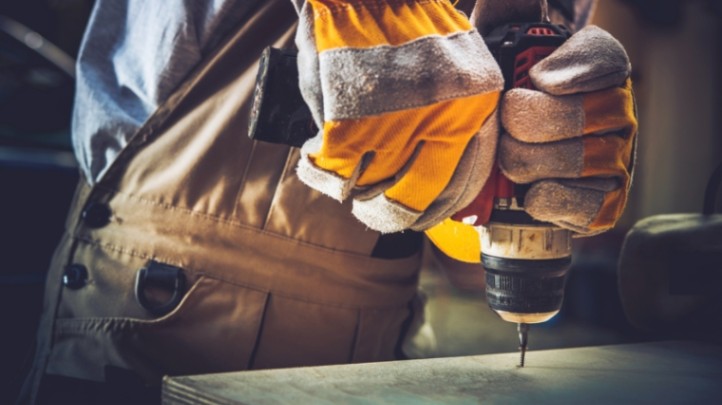Drilling hard metals can be a challenging task. However, it can be done effectively and efficiently with the proper techniques and tools. This article will provide 10 tips for drilling hard metals to help you achieve the desired results.

The Art of Drilling: Mastering Hard Metals Like a Pro
1. Choose the Right Drill Bit
The first step in drilling hard metals is to choose the right drill bit. Hard metals like stainless steel, titanium, and tungsten require special drill bits to withstand extreme temperatures and pressures in the drilling process. Carbide, cobalt, and diamond-coated drill bits are the best options for drilling hard metals.
2. Use a High-Speed Drill
A high-speed drill can help you achieve faster and more accurate results when drilling hard metals. A high-speed drill is designed to spin more quickly than a standard drill, which can help reduce the heat generated during the drilling process.
3. Apply Lubrication
Applying lubrication to the drill bit and the drilled surface can help reduce friction and heat during the drilling process. This can help prevent the drill bit from becoming dull or overheating, leading to damage or breakage.
4. Cool the Drill Bit
Cooling the drill bit with water or oil can also help to reduce heat and friction during the drilling process. This can help to prevent the drill bit from becoming too hot, which can cause it to become dull or break.
5. Use a Slow and Steady Approach
When drilling hard metals, it is essential to use a slow and steady approach. Drilling too quickly can cause the drill bit to become too hot and dull while drilling too slowly can cause the metal to become too hot and deform.
6. Start with a Pilot Hole
Starting with a pilot hole can help to guide the drill bit and prevent it from slipping or wandering during the drilling process. A pilot hole can also help reduce the force required to drill through the metal, which can help prevent the drill bit from becoming too hot or breaking.
7. Keep the Drill Bit Straight
Keeping the drill bit straight can prevent it from damaging or breaking during drilling. A drill guide or clamp can help keep the drill bit in the correct position and prevent it from wandering or slipping.
8. Use the Right Pressure
Applying too much pressure when drilling hard metals can cause the drill bit to become too hot and break while applying too little pressure can cause the drill bit to become dull and ineffective. Using the correct pressure can help ensure that the drilling process is efficient and effective.
9. Check the Depth
Checking the depth of the hole being drilled can help to ensure that the drill bit is not drilling too deeply or not deeply enough. This can help to prevent damage to the drill bit or the metal being drilled.
10.Clean the Drill Bit
Cleaning the drill bit after each use can help to prevent it from becoming dull or damaged. Using a wire brush or a cleaning solution can help to remove any debris or buildup from the drill bit, which can help to keep it in good condition and extend its lifespan.
Frequently asked questions
What is the best drill bit for drilling hard metals?
A carbide or cobalt drill bit is the best drill bit for drilling hard metals. These types of drill bits are made of high-speed steel and are designed to withstand the high temperatures and pressures of drilling hard metals.
How can I prevent my drill bit from overheating?
To prevent your drill bit from overheating, you can use lubrication and cooling methods such as applying cutting fluid, water, or oil to the drilled surface. Additionally, you can drill slowly and steadily, use the right pressure, and choose a drill bit that is suitable for the type of metal you are drilling.
How can I drill straight and prevent the drill bit from wandering or slipping?
To drill straight and prevent the drill bit from wandering or slipping, you can use a drill guide or clamp to keep the drill bit in the correct position. You can also start with a pilot hole to guide the drill bit and reduce the risk of slipping or wandering.
How can I know if I’m drilling deep enough or too deep?
You can use a depth gauge or stop collar to ensure that you are drilling deep enough or not too deep. A depth gauge is a tool that measures the depth of a hole, while a stop collar is a ring that attaches to the drill bit and prevents it from drilling too deep.
How can I prolong the lifespan of my drill bit?
To prolong the lifespan of your drill bit, you can clean it after each use using a wire brush or cleaning solution to remove any debris or buildup. You can also store your drill bits in a dry, cool place to prevent rust or corrosion. Additionally, you can choose a high-quality drill bit suitable for the type of metal you are drilling and use it carefully and precisely.
Conclusion
In conclusion, drilling hard metals requires carefully considering the tools and techniques. You can achieve the desired results efficiently and effectively by following these 10 tips for drilling hard metals. Remember to choose the right drill bit, use a high-speed drill, apply lubrication and cooling, use a slow and steady approach, start with a pilot hole, keep the drill bit straight, use the right pressure, check the depth, and clean the drill bit after each use. With these tips, you can become an expert in drilling hard metals.
